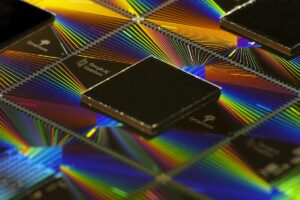
Time crystals sound suspiciously like a component of a time machine, but they’re not, at least not right now. Time crystals are actually a novel phase of matter — mostly theoretical — composed of parts that oscillate in a regular, repeating cycle. And, theoretically again, can sustain these changes without expending any energy.
Come to think of it, it sounds suspiciously like perpetual motion, too. Be that as it may, physicists have been after proof of time crystals for years. In a preliminary study published on ArXiv, a Google-led team of physicists may have discovered proof by simulating time crystals on the company’s quantum computer.
According to the team, they set up a continuous family of tunable CPHASE gates on an array of superconducting qubits to simulate discrete time crystal or DTC. For the demonstration, the researchers used a chip with 20 qubits to serve as the time crystal.
The researchers said that their experiment offers preliminary evidence that their system could create time crystals and add that the tunability of their approach offers a better chance of scalability and paves a way for further study.

They write: “The scalability of our protocols sets a blueprint for future studies of non-equilibrium phases and phase transitions on complex quantum systems beyond classical simulability. The efficient verification of eigenstate order can inspire a general strategy for establishing whether a desired property, such as a particular phase, is in fact present in a quantum processor.”
The Nobel Prize-winning physicist Frank Wilczek conceived the idea of time crystals in 2012, while teaching a class about ordinary (spatial) crystals. “If you think about crystals in space, it’s very natural also to think about the classification of crystalline behavior in time,” he told Quanta.
Researchers performed the experiment on Google’s Sycamore device, the same device that, in 2019, Google demonstrated quantum supremacy by completing a task in 200 seconds that would take a conventional computer 10,000 years.
The Google-led experiment is preliminary and a lot of work remains. The publishing of the paper on the pre-print server is just the first step to invite further review. Ultimately, an official peer review and, if successful, inclusion in a scientific journal for further dissemination and critique is likely.
For more market insights, check out our latest quantum computing news here.

















